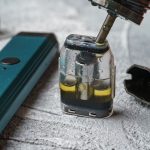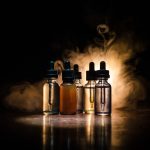When it comes to vaping, the quality of your vape juice matters just as much as the device you use. A well-crafted e-liquid delivers clean flavor, smooth vapor, and consistent satisfaction — while poor-quality juices can ruin coils, cause throat irritation, or even pose health risks.
Whether you use a refillable system or a prefilled 6000 puffs vape by Hayati, understanding what makes a vape juice safe and premium ensures a better, safer experience. In this guide, we’ll walk you through how to spot a high-quality vape juice by looking at labels, ingredients, and testing standards.
Why Quality Vape Juice Matters
Not all vape juices are created equal. While some are produced in clean, regulated facilities using pharmaceutical-grade ingredients, others are made with cheap flavorings and no quality control. The result? Harsh vapor, muted flavor, and sometimes even unsafe chemicals.
A premium e-liquid offers:
- Better taste – flavors remain pure and consistent.
- Longer coil life – no heavy residue or sweetener buildup.
- Health reassurance – tested for purity and contaminants.
Low-quality vape juices, on the other hand, can damage your device and your vaping experience. They often contain excess sweeteners or artificial additives that caramelize on coils, causing burnt tastes and reduced performance.
When you invest in tested, trusted e-liquids, you protect your health and your hardware. Devices like the HQD Air Glow 70K, for example, use professionally formulated, lab-tested e-liquids to guarantee consistent satisfaction and flavor with every puff.
Reading the Label: What to Check Before Buying
One of the easiest ways to identify a reliable vape juice is by reading the label. Every legitimate brand provides clear, transparent information about its contents and manufacturing details.
Here’s what to look for:
1. Nicotine Strength
Vape juices come in a variety of nicotine levels, usually ranging from 0mg to 20mg (or higher for nicotine salts).
Choosing the right strength helps ensure satisfaction without harshness or excessive nicotine intake.
For instance, prefilled systems like the Pyne Pod Click 50K use pre-calibrated nicotine salt formulations that deliver a smooth, cigarette-like hit — perfect for users who want balance and consistency without worrying about nicotine measurements.
2. PG/VG Ratio
- Propylene Glycol (PG): Enhances flavor and throat hit.
- Vegetable Glycerin (VG): Creates thick, smooth vapor.
Common ratios:
- 50/50 PG/VG: Best for pod systems and nicotine salts.
- 70/30 VG/PG: Preferred by sub-ohm users for dense clouds.
A good label always lists this ratio. Avoid products that hide or omit it — that’s a sign of poor transparency.
3. Ingredients List
A trustworthy vape juice should include only four main components:
- Propylene Glycol (PG)
- Vegetable Glycerin (VG)
- Nicotine (optional)
- Food-grade flavorings
That’s it. No oils, diacetyl, or artificial thickening agents. If a label lists “unknown flavor mix” or has overly complex ingredients, it’s best to avoid it.
4. Manufacture and Expiry Date
Every reputable e-liquid brand includes a manufacture date and expiry date. Vape juices naturally degrade over time, and expired products can taste off, separate, or lose nicotine potency.
5. Country of Origin and Manufacturer Info
Premium e-liquids proudly display where they’re made. Products from the UK, EU, or USA typically follow stricter regulations such as TPD (Tobacco Products Directive) compliance or FDA manufacturing standards.
If the packaging doesn’t clearly show the manufacturer’s name or country of origin, that’s a major red flag.
Understanding Vape Juice Ingredients
Let’s break down the key ingredients and what makes them safe:
- Propylene Glycol (PG): A food-grade liquid that carries flavor and delivers a throat hit similar to smoking. It’s clear, thin, and approved for inhalation in vaping products.
- Vegetable Glycerin (VG): A plant-based liquid that adds smoothness and vapor density. It’s thicker and slightly sweet, making vapor softer on the throat.
- Nicotine: Optional, but in quality vape juices, it’s always pharmaceutical-grade — clean and accurately measured.
- Flavorings: Only water-soluble, food-grade flavorings designed for vaping should be used — never oil-based ones.
Devices like the Hayati Pro 6K and Hayati 25k use regulated, laboratory-certified e-liquids that meet these standards, ensuring both safety and flavor consistency.
Third-Party Testing: The Mark of Quality
One of the most important things to check for in any vape juice brand is third-party lab testing.
High-quality e-liquid manufacturers often send their products to independent laboratories for chemical analysis and safety verification. This ensures that their juices are:
- Free from contaminants like heavy metals or residual solvents.
- Verified for accurate nicotine content.
- Tested for banned ingredients like diacetyl or acetoin.
Reputable brands display their test results or provide QR codes on packaging that link to batch reports. Look for labels that mention:
- TPD Compliant (UK/EU)
- ISO 9001 Certified
- GMP (Good Manufacturing Practice)
Transparency is the key. If a company doesn’t publish or mention its testing process, it’s safer to look elsewhere.
Red Flags: How to Spot Low-Quality Vape Juice
Avoid any product that shows these warning signs:
- No label or missing ingredients list.
- Vague or flashy branding with no company details.
- Overly cheap pricing compared to reputable brands.
- Harsh, chemical-like smell when opened.
- E-liquid that’s discolored, too thick, or separated.
- Missing expiry date or nicotine level.
If a vape juice looks suspicious or feels off, trust your instincts — quality brands always prioritize transparency and safety.
Choosing the Right Juice for Your Device
Your vape device determines what type of e-liquid you should use. Using the wrong type can cause leaks, dry hits, or coil burnout.
- Pod Systems & Nicotine Salts: Work best with 50/50 PG/VG blends and lower wattages.
- Sub-Ohm Devices: Designed for high-VG juices (70/30 or 80/20) and lower nicotine levels.
Prefilled pod kits like the Pyne Pod Click 50K make this simple — every pod is pre-tuned with the correct e-liquid formula for its coil, delivering rich flavor and smooth hits without any adjustment.
How to Store Vape Juice Properly
Even the best e-liquid can degrade if stored incorrectly. To maintain quality:
- Keep bottles in a cool, dark place, away from sunlight and heat.
- Store upright and tightly sealed to prevent oxidation.
- Avoid keeping bottles in hot cars or near windows.
- Don’t mix old and new e-liquid — always use fresh batches.
Proper storage ensures that the flavor, nicotine strength, and vapor consistency remain stable until the bottle’s expiration date.
What Defines a Premium Vape Juice Brand
When evaluating vape juices, here’s what sets the best apart from the rest:
- Clear labeling and compliance with regulations.
- Consistent flavor — no chemical aftertaste.
- Smooth vapor that doesn’t burn the throat.
- Coils last longer due to clean ingredients.
- Independent lab test results available online.
- Good brand reputation and positive reviews.
Devices like the Hayati Pro 6K and HQD Air Glow 70K use only premium-grade liquids that meet these standards, providing peace of mind and performance in every puff.
Conclusion
Choosing the right vape juice isn’t just about flavor — it’s about quality, transparency, and safety. Always check the label for ingredients, nicotine levels, and manufacturing details. Look for third-party testing or compliance certifications that prove the product has been verified for purity.
Premium pod systems like the Hayati Pro 6K, HQD Air Glow 70K, and Pyne Pod Click 50K all use high-grade, lab-tested e-liquids to deliver smooth, clean flavor without compromise.
By learning how to read labels and understand ingredients, you’ll protect your health, your coils, and your taste buds — ensuring every puff is flavorful, safe, and satisfying.









